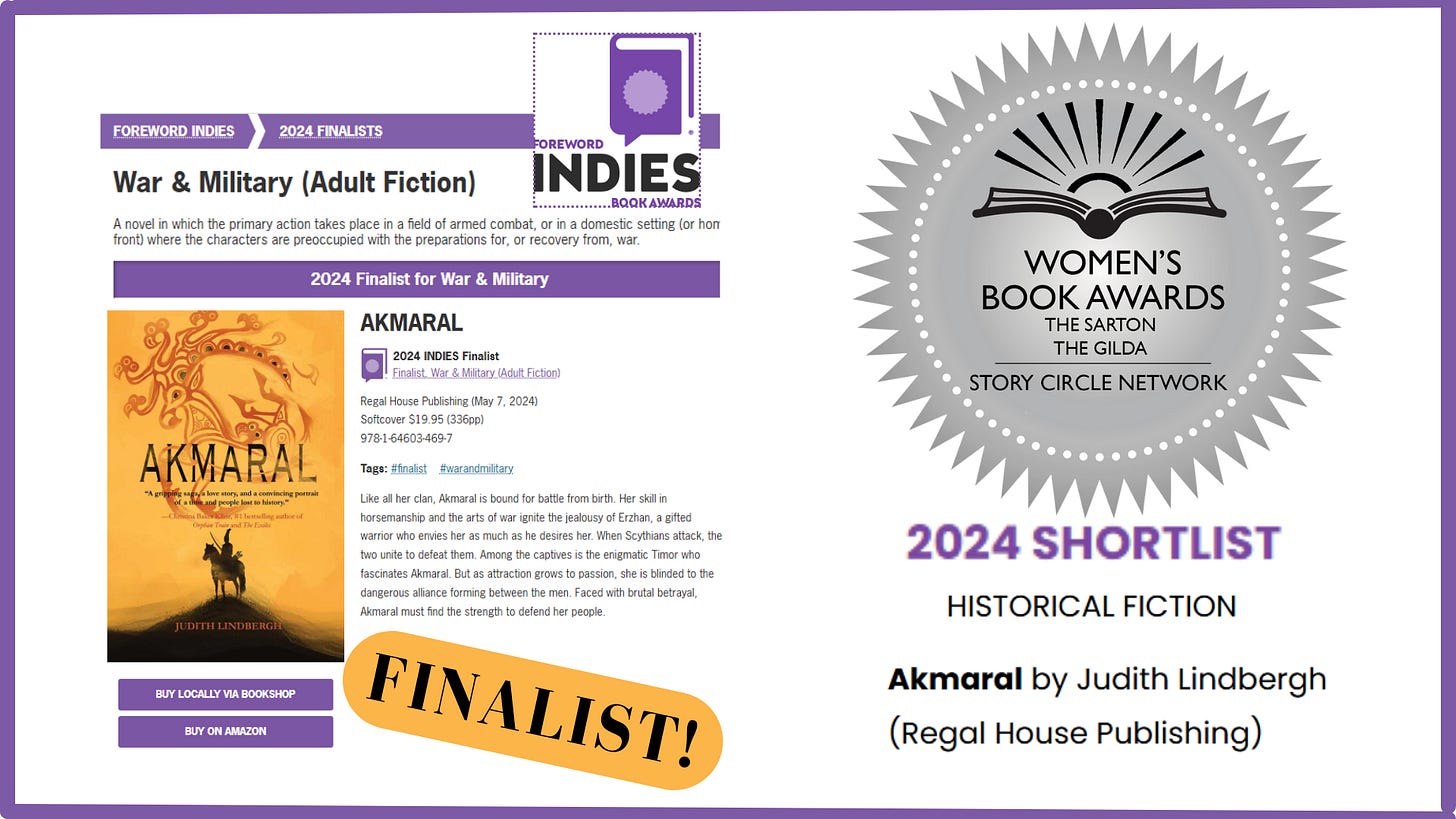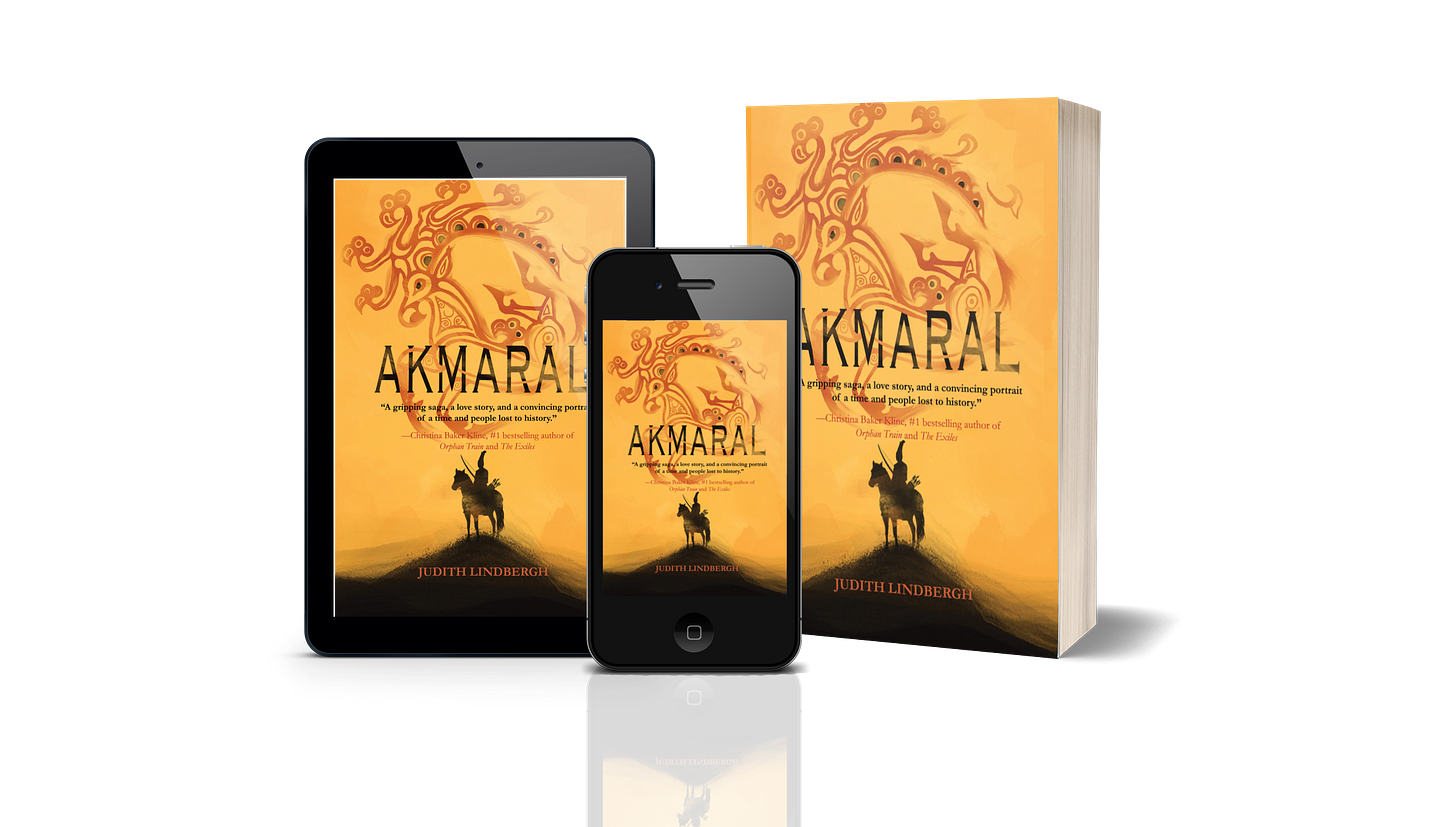Book Awards, Ancient Medicine, Greenland Then and Now
Plus a creative writing prompt at the end: The Monster Within
Book Awards, Big and Small
If you’re like me, you pay attention to book awards—the Pulitzer, Booker, National Book Award, Nobel. While I haven’t loved, or even read, every prize winner out there, it’s an undeniable fact that these prizes push book sales for a particular kind of literary reader like me.
Needless to say, smaller press authors don’t generally get to swim in that illustrious pool. (In fact, authors can submit their books to most of those prizes—not the Nobel!—but the chances of being chosen are fewer than the Earth being struck by another apocalyptic asteroid. Yes, it could happen and probably will one day, but….)
There are smaller awards out there—legitimate and not-so-much. If you’ve taken my Book Marketing Boot Camp at The Writers Circle, you’ll have heard my exasperation over how many small book prizes prey on authors’ hunger for recognition, racking up submission fees without any true “award” besides a digital sticker.

For AKMARAL, I was torn between self-respect and my own desire for recognition. I culled the most egregious culprits from my list, but submitted to a dozen that seemed sound and offered some sort of prize. I mean, winning $100 isn’t much, but at least I’d recoup my submission fee… if I won.
I am happy to report that AKMARAL is a Finalist in the Foreward Reviews’ Indie Book of the Year in the War & Military category. It’s also been shortlisted for the Sarton Prize in Historical Fiction. Both awards have good standing. Foreward Reviews is the primary review publication for small, independent presses. And the Sarton is awarded by Story Circle Network, a non-profit organization dedicated to amplifying women’s stories. I didn’t get even a nod from several of my other submissions, and I’m still waiting for responses from a few more. While the recognition truly is lovely (and even for these prizes, the competition is fierce), I’m still hoping for that $100 win!
Science Meets Ancient Medicine in My First Novel
Among the towers of books on my reading stand is EVE: How the Female Body Drove 200 Million Years of Human Evolution by Cat Bohannon. This fascinating study of evolutionary biology focuses on aspects of the female body I had never even thought to question. I often ponder the path of cultural evolution (and have even been quoted on The History Channel’s series, MANKIND): how we developed agriculture, how we discovered that yeast made flour and water rise, how we survived in so many ways before the advent of technology, medicine, etc. But this book examines how human biology itself influences cultural developments and behavior.
One fact struck me from the very first chapter: cow’s colostrum, the secretion first produced by cows after giving birth, was used as an early antibiotic. This reminded me of a scene in my first novel, THE THRALL’S TALE, featuring a ritual performed against a deadly plague that included a soup made of milk from a “pregnant udder.” While I can’t quite remember where I read about this ritual, I can assure you that I didn’t make it up. Could the Vikings, or at least their wise women, have been aware of the medicinal power of colostrum? Were these rituals based on observational evidence that would later be proven using scientific methods?
Underestimations of ancient and traditional practices have resulted in the loss of valuable wisdom across countless cultures, not to mention the condemnation of those practitioners throughout history. At the same time, I am not going to go out to my garden to test out which weeds heal and which kill. Given our suddenly complicated relationship with vaccines and other formerly trusted medical solutions, scientific research is still critical to ensuring which “old wives’ tales” are actually true.
Greenland—Hands Off!
THE THRALL’S TALE takes place in Viking Age Greenland, a location that is much in the news of late. My connection to Greenland goes way back to the 1990s, well before the current administration’s threats to “buy” the largest island in the world.
A strong current running through the depths of my novel is a supernatural sensibility that I felt distinctly when I was there. I expressed this ominous feeling through the voice of the seeress Thorbjorg when she first arrives in Greenland:
It is said that this earth is made of the giant Ymir’s corpse, that, when he fell at the Norse gods’ hands, his spine decayed to mountain ranges. Stones and pebbles once had been his toes. The other giants fled defeat unto the farthest reaches, yet, within the crags and shadows, still the invisibles remain.
Older than the tree Yggdrasil, beyond rock and ice and soil and mound, beneath, within, these spirits lie and wait. Is it these I seek, Alfather? These whose pleasure I must make, whom I must trick with humble thoughts and bare a tinge of fear, to bargain and appease if we should tarry in this land?
While the spirits of Greenland’s landscape are today interpreted as something significantly less mystical, it remains a place that feels and truly is formidable. Beyond the small, snowbound villages and towns that cling to the rocky coasts, the great icesheet looms, breathing, dripping, creeping, portentous. It is a place that has always defied the hubris of humanity’s goals and greed. I’ve been in touch with friends there who share my thoughts: that those who trespass are rarely welcomed.
THE THRALL’S TALE Re-Release: Book Cover Critique, Please!
Why am I mentioning THE THRALL’S TALE so much? I’m finally taking time to reissue the paperback. The novel went out of print ages ago, and the rights reverted to me from my publisher—unironically—Viking. But now that AKMARAL has revived my readership, I thought releasing an ebook and a new paperback would be apropos.
Book cover design is always an issue, and not only for self-published and small press authors. My Viking hardcover was gorgeous: gilded, embossed, and serious, which suited the text, but the paperback was, in my opinion, … let’s just say, less so:
I’ve been working for a long time on the new paperback cover (basically any time my writing got frustrating, I’d open Photoshop and fiddle):
As for the novel itself, it’s fascinating to revisit a work I wrote before my youngest son was born. While I remember almost every word, I also feel like it’s someone else’s writing. The story is dark, difficult, and authentic to surviving in 10th century Greenland. And the language! I didn’t realize how much my legacy as an actor and my love of Shakespeare influenced the rhythms and imagery of this book. Did I really write that? No wonder it took me a decade!
After I published the novel, I promised myself I’d never write a book quite like it again. But I admire—and somewhat fear—the obsessive young woman who created this powerful tale.
Creative Writing Prompt: The Monster Within
“We are all monsters in our darkest hearts – and the monsters within us are powerful beings, protectors, harbingers, bringers of horror and strength and change. They are also harm-bringers, hurtful beings, creatures that lash out and destroy that which we love most… I love monsters because they represent the hungriest, most hidden parts of ourselves that we most often confine to exile. If I can love a monster, if someone can love the monster in me, then anyone is capable of loving and being loved… – Kai Cheng Thom, interviewed in Apt613
Consider the above quote from author Kai Cheng Thom. It makes me think about a character in THE THRALL’S TALE who is, in countless ways, a monster—not in a fantastical or mythological sense. She is human, but also the embodiment of anger, pain, revenge, and regret, made manifest in a fully drawn character. And her actions reflect the nature of her birth. (I hope you’ll read it and find out what I mean.)
Who is the monster in your story? Is there a monster within you? And how does that monster serve you? I particularly love that the monster within can be a protector as well as a harm-bringer. When a monster lashes out, perhaps they are only protecting what they love most. This thought, when applied to writing, provides deeply necessary complexity to the emotions and actions of our characters. And when applied to memoir and personal essay, perhaps this thought can uncover truths in the multi-faceted realities within ourselves.
PROMPT: Write about the monster within—how it motivates and activates within you or your character, and how you (or your character) struggle to control its worst inclinations. Remember that even the beautiful princess in the castle has a monster within her. And even the beast in the dungeon has something that they deeply love.
Thank you, everyone, for your support. And to my paid subscribers, you are ANGELS!
AKMARAL: a nomad woman warrior of the ancient Central Asian steppes must make peace with making war
“A crackling novel”—Publishers Weekly | “A gripping saga”— #1 bestselling author Christina Baker Kline
4.8 stars on Amazon | 4.28 stars on Goodreads - PLEASE ADD YOUR OWN REVIEW!
Follow me on Instagram, Facebook, Threads, GoodReads, and Bluesky. Or visit judithlindbergh.com.









I love this piece, from your recent literary honors to the ancient remedies (fascinating history about cow colostrum) to the monster within prompt.
Enjoyed these comments - adding The Thrall's Tale to my list!